fichtengrau
Exhibition | fichtengrau | Galerie Kandlhofer
11 April - 1 June 2024

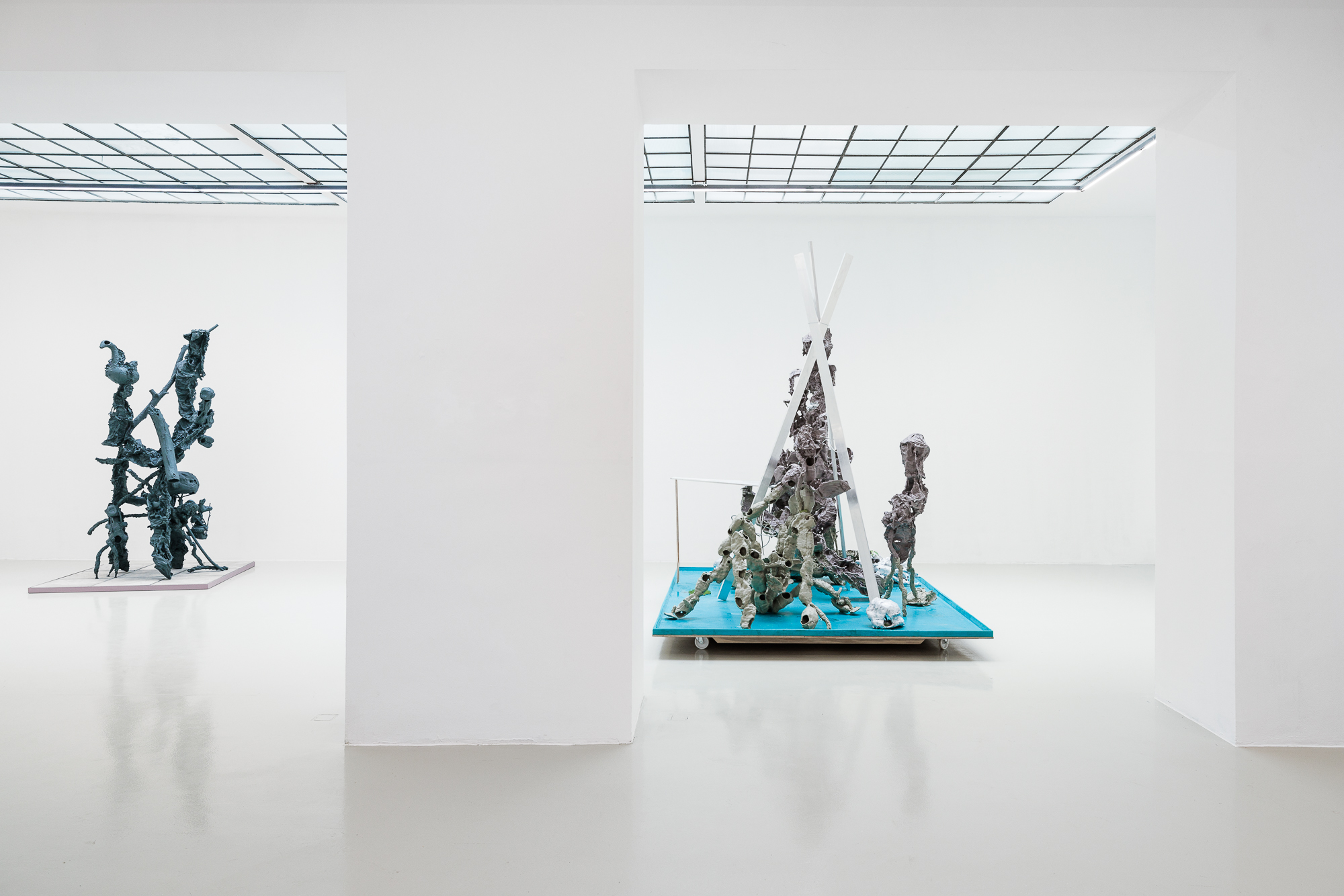
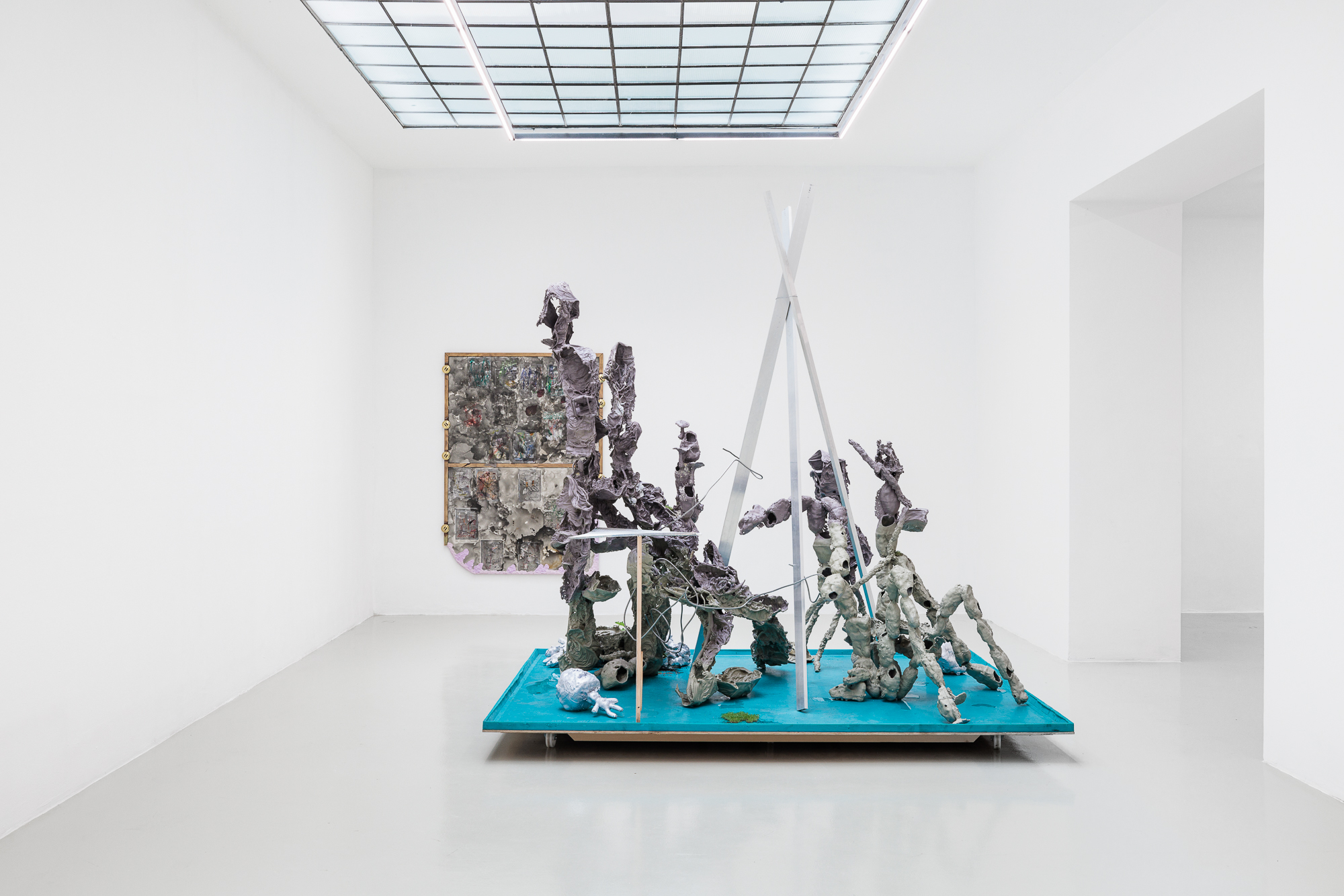


The biomorphic sculptures of Karl Karner in his new exhibition "fichtengrau" at Galerie Kandlhofer greet visitors in a larger-than-life and almost intimidating manner. Resembling fantastical-futuristic life forms (or landscapes?), these works, made of aluminum and bronze cast, exhibit finely branching structures and an organic surface, leaving behind a highly fragile impression.
The reference to nature, particularly botany, is obvious, as the artist clearly names individual works in relation to it. The resilient spruce serves as the namesake for Karner's nearly three-meter-high sculptures, titled "Fichtengrau" or "fichtengrün." While evoking a clear image, the exhibited works only partially reflect this image in an altered form. Despite vaguely resembling dead trees in their vertical arrangement and barren appearance, the unconventional, almost bizarre forms of the sculptures immediately disrupt this clear image. They are based on concrete references from the flora and fauna, such as mushrooms, branches, tree bark, or vineyard snails, which the artist combines into grotesque sculptural growths through casts. Additionally, fragmentary references to human intervention are hinted at when the individual elements are assembled into artistic assemblages. The idea of choreography becomes apparent when observing the sculptures.
From a distance, the figurative silhouette of the objects initially comes to the forefront, only to reveal upon closer inspection a multitude of diverse organic forms, inevitably drawing the viewers' gaze into the depths of surreal landscape scenes. These are partly patinated and partly covered with clay slip by the artist. The result is an aesthetically homogeneous overall impression that almost gives the sculptures a classical appearance. From their observer position, humans gaze upon an artistic amalgam of our reality, distorted almost beyond recognition, frozen in the moment of its creation. Karner's reflections on the interplay between humans and nature seem to materialize in the sculptures: starting from the concrete motif of the spruce, which, as a particularly robust tree species in the 20th century, was predestined for reforesting forests, the full extent of human mismanagement of the past decades is vividly brought to light. In the face of climate change, tragically, the spruce is one of those tree species most severely affected by global warming.
It is an observational glance at our present rather than a clear critique that Karner undertakes here – pessimism is foreign to the artist; rather, delicate signs of hope become discernible as individual shoots sprout from the underground of one of his sculptures. Karner has prepared the ground of specific works with seeds, the watering of which he personally undertakes. Consequently, during the exhibition period, the sculptures will undergo a metamorphosis that symbolizes the human potential to counteract the damage already done by showing mindfulness towards nature and not remaining indifferent.
Text by Sergey Harutoonian
The reference to nature, particularly botany, is obvious, as the artist clearly names individual works in relation to it. The resilient spruce serves as the namesake for Karner's nearly three-meter-high sculptures, titled "Fichtengrau" or "fichtengrün." While evoking a clear image, the exhibited works only partially reflect this image in an altered form. Despite vaguely resembling dead trees in their vertical arrangement and barren appearance, the unconventional, almost bizarre forms of the sculptures immediately disrupt this clear image. They are based on concrete references from the flora and fauna, such as mushrooms, branches, tree bark, or vineyard snails, which the artist combines into grotesque sculptural growths through casts. Additionally, fragmentary references to human intervention are hinted at when the individual elements are assembled into artistic assemblages. The idea of choreography becomes apparent when observing the sculptures.
From a distance, the figurative silhouette of the objects initially comes to the forefront, only to reveal upon closer inspection a multitude of diverse organic forms, inevitably drawing the viewers' gaze into the depths of surreal landscape scenes. These are partly patinated and partly covered with clay slip by the artist. The result is an aesthetically homogeneous overall impression that almost gives the sculptures a classical appearance. From their observer position, humans gaze upon an artistic amalgam of our reality, distorted almost beyond recognition, frozen in the moment of its creation. Karner's reflections on the interplay between humans and nature seem to materialize in the sculptures: starting from the concrete motif of the spruce, which, as a particularly robust tree species in the 20th century, was predestined for reforesting forests, the full extent of human mismanagement of the past decades is vividly brought to light. In the face of climate change, tragically, the spruce is one of those tree species most severely affected by global warming.
It is an observational glance at our present rather than a clear critique that Karner undertakes here – pessimism is foreign to the artist; rather, delicate signs of hope become discernible as individual shoots sprout from the underground of one of his sculptures. Karner has prepared the ground of specific works with seeds, the watering of which he personally undertakes. Consequently, during the exhibition period, the sculptures will undergo a metamorphosis that symbolizes the human potential to counteract the damage already done by showing mindfulness towards nature and not remaining indifferent.
Text by Sergey Harutoonian

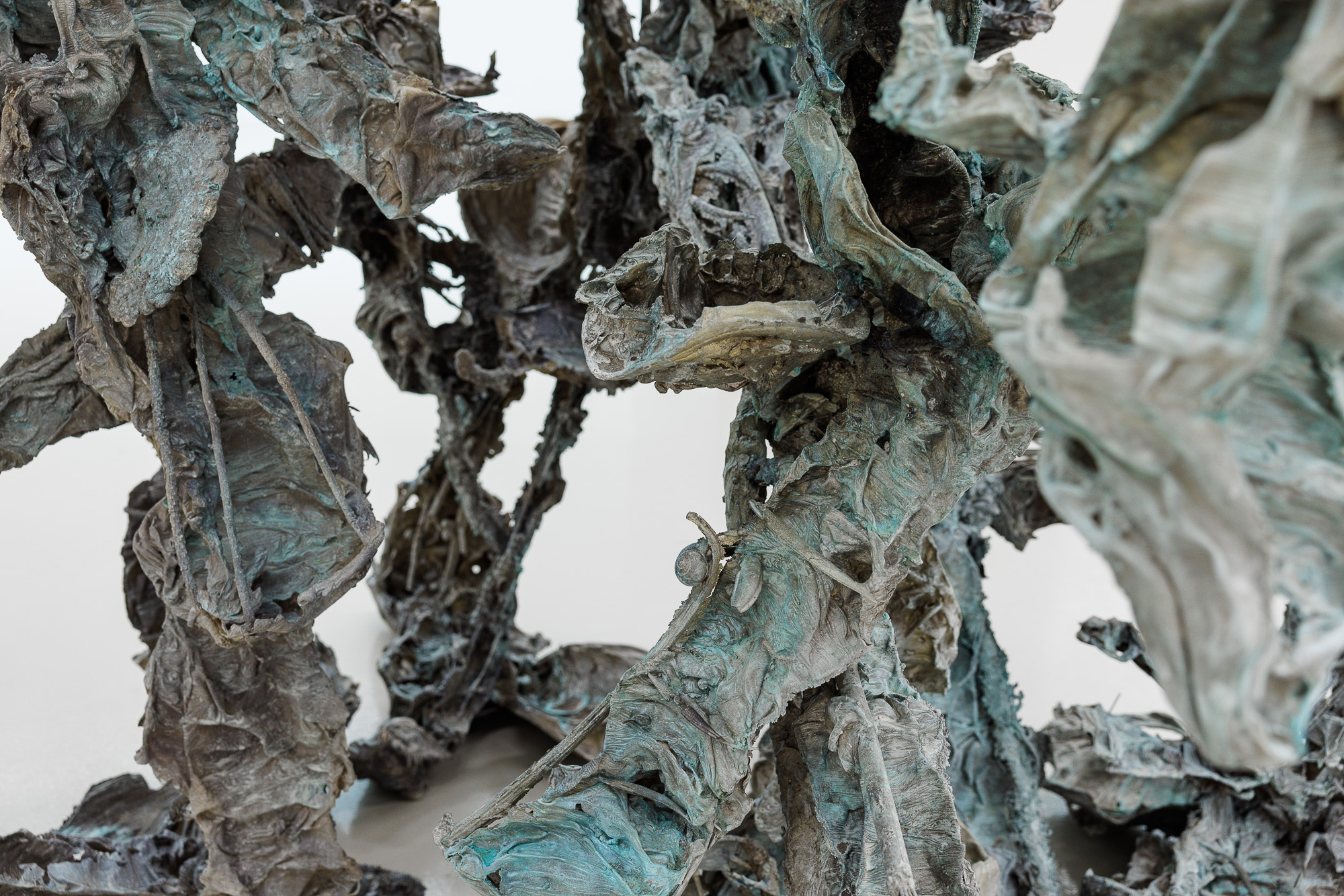
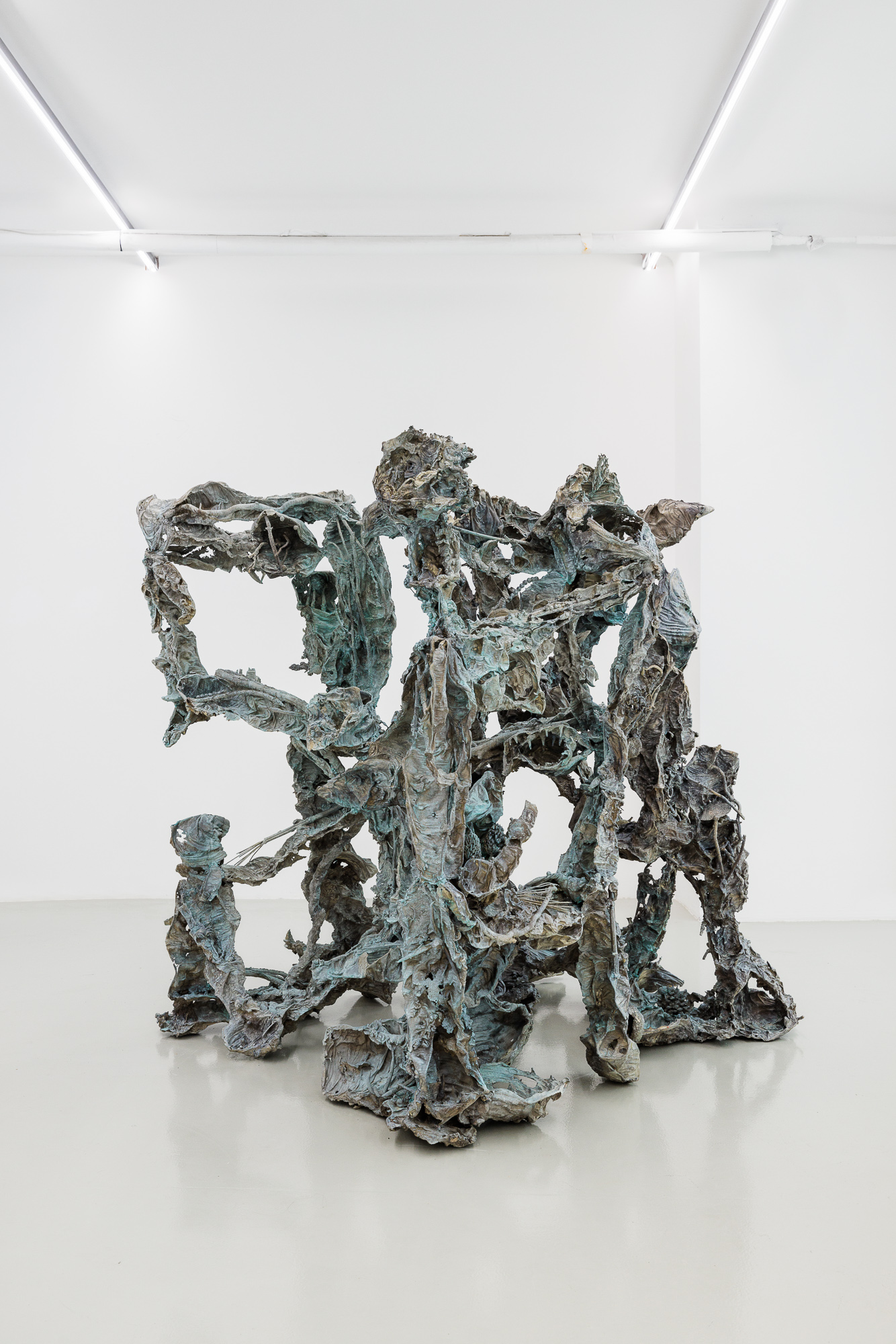


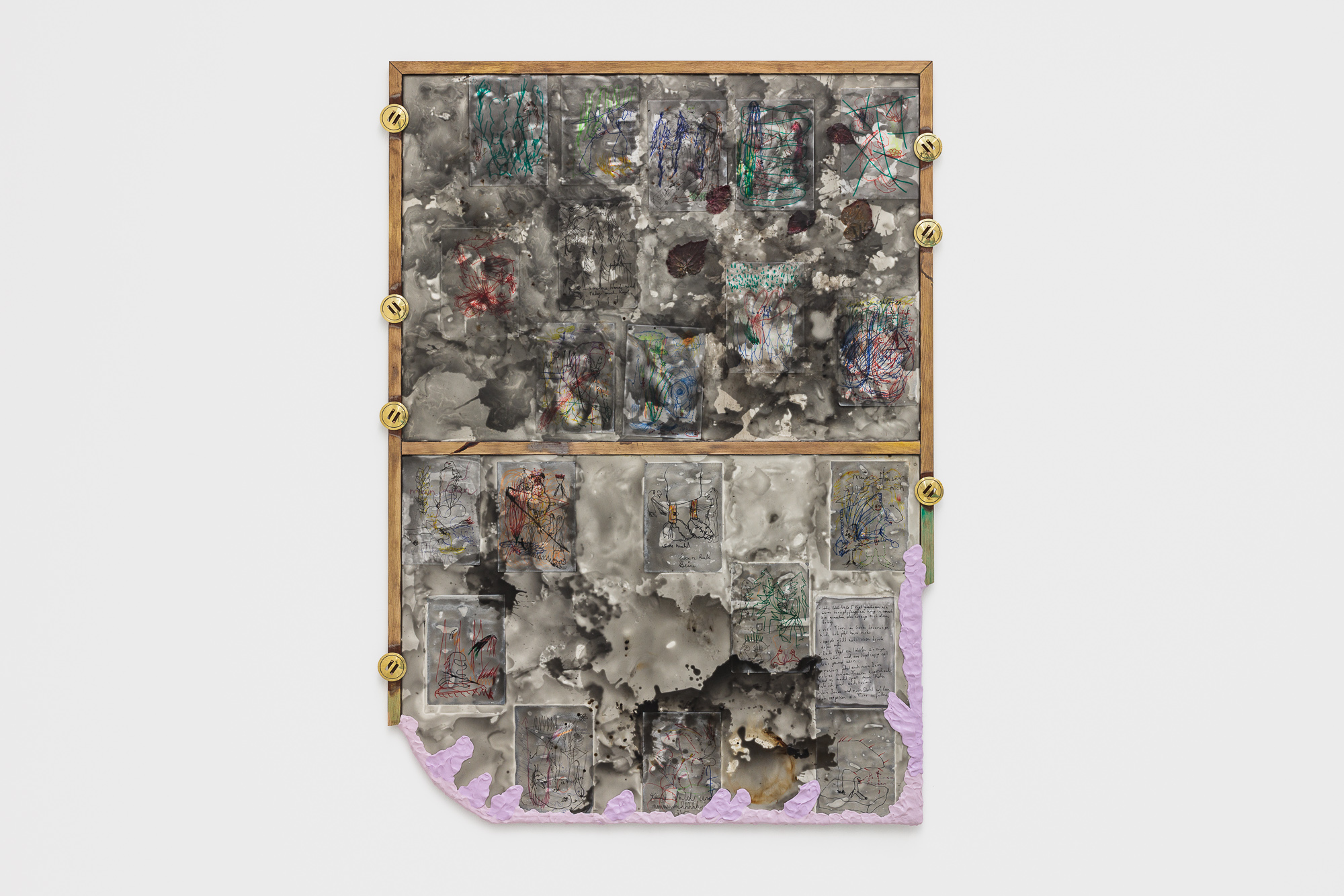



photo credit: © kunst-dokumentation.com / Manuel Carreon Lopez
Performance
Karl Karner
Vocals: Sarah Sternat
Music: Michael Funk